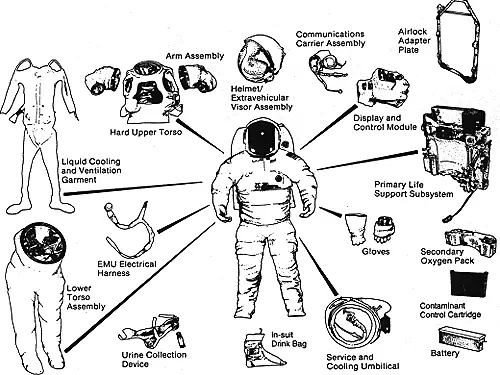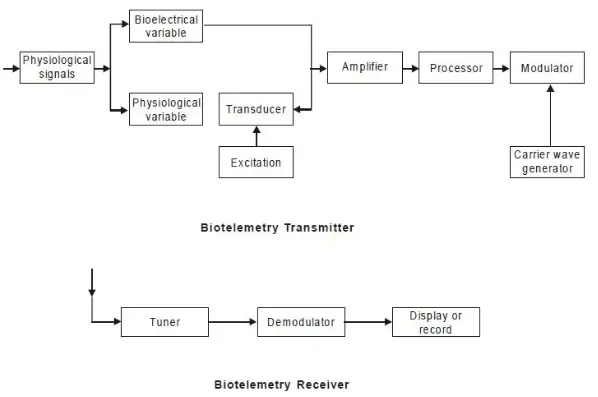Biotelemetry consists of two parts i.e. Bio and Telemetry. Bio is related to living being or process or phenomenon occurring in the human body. Telemetry is the measurement at a distance.
So, Biotelemetry is a method of measuring biological parameters from a distance.
The transmission of data from the point of generation to the point of reception can be done in various ways. We can transmit data using telephone links, or radio transmission, etc.
The simplest example of biotelemetry is stethoscope. The device amplifies acoustically the heartbeats and transmits their sound to the ears of a doctor through a hollow tube system.

Today, it is possible now to apply biotelemetry to almost all kind of measurements like ECG, EMG and EEG and physiological variables that require transducers such as blood pressure, blood flow, and temperature.
Biopotential signal measurements require external excitation for the conversion of physiological variables into variations of resistance, induction or capacitance. The variations can be calibrated to display real pressure, flow, and temperature.
In biotelemetry, the measurements as analog signals (voltage or current) in a suitable form are transmitted which are received and decoded as actual measurements at the receiving end. ECG telemetry is the transmission of ECG, from the site of an emergency to a hospital where a doctor can interpret, the ECG and instruct suitable treatment for the patient. Patients with heart problem can wear ECG telemetry unit on the job which relays ECG data to the hospital for checking. ECG telemetry unit is also used for monitoring when an athlete runs a race to improve his performance. Telemetry is also used for transmission of EEG. It is generally used for mentally disturbed children. The child wears specially designed helmet known as the football helmet or Superman’s element which has built in electrodes so that his EEG can be monitored for any traumatic difficulty during play.
Biotelemetry is also used for electromyogram (EMG) for studies of muscle damage or partial paralysis problem.
Biotelemetry Working
A biotelemetry system consists of transmitter and receiver. The biotelemetry transmitter and receiver block diagram are shown below. Physiological (EEG, ECG, EMG, etc.) signals are obtained by a suitable transducer which is amplified and subjected to modulate the carrier waves for transmission. The receiver receives the transmission and demodulates to separates to separate the signal from the carrier waves to display or record the signal as shown in the block diagram.

Applications of Biotelemetry
- RF transmission for monitoring astronauts in space.
- Monitoring of patients in an ambulance while transiting to the hospital.
- Patient monitoring where freedom of movement is desired, such as in obtaining an exercise ECG(Electrocardiogram).
- Monitoring of patients who are permitted to stay away from the hospital.
- The collection of medical data from a home or office.
- Monitoring of animals in their natural habitat.
- Special internal techniques such as tracing acidity or pressure through the gastrointestinal tract.
- Use of telephone links for transmission of ECG or other medical data
- Isolating the patients from electricity operated measuring equipment such as ECG equipment in order to prevent any accidental shock to them.
